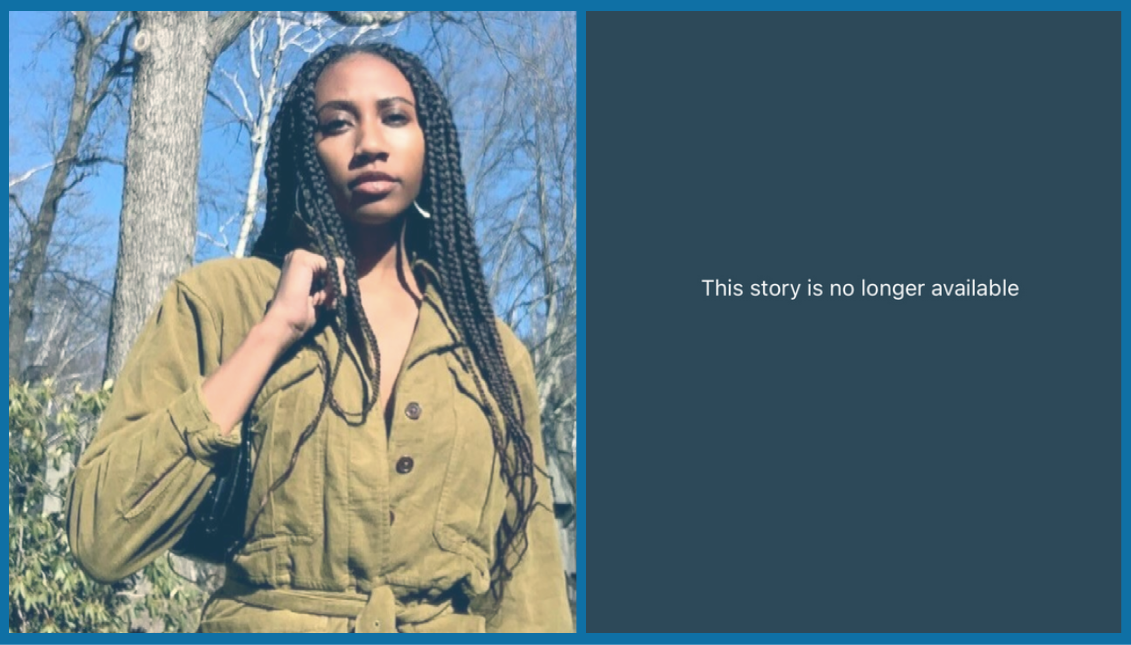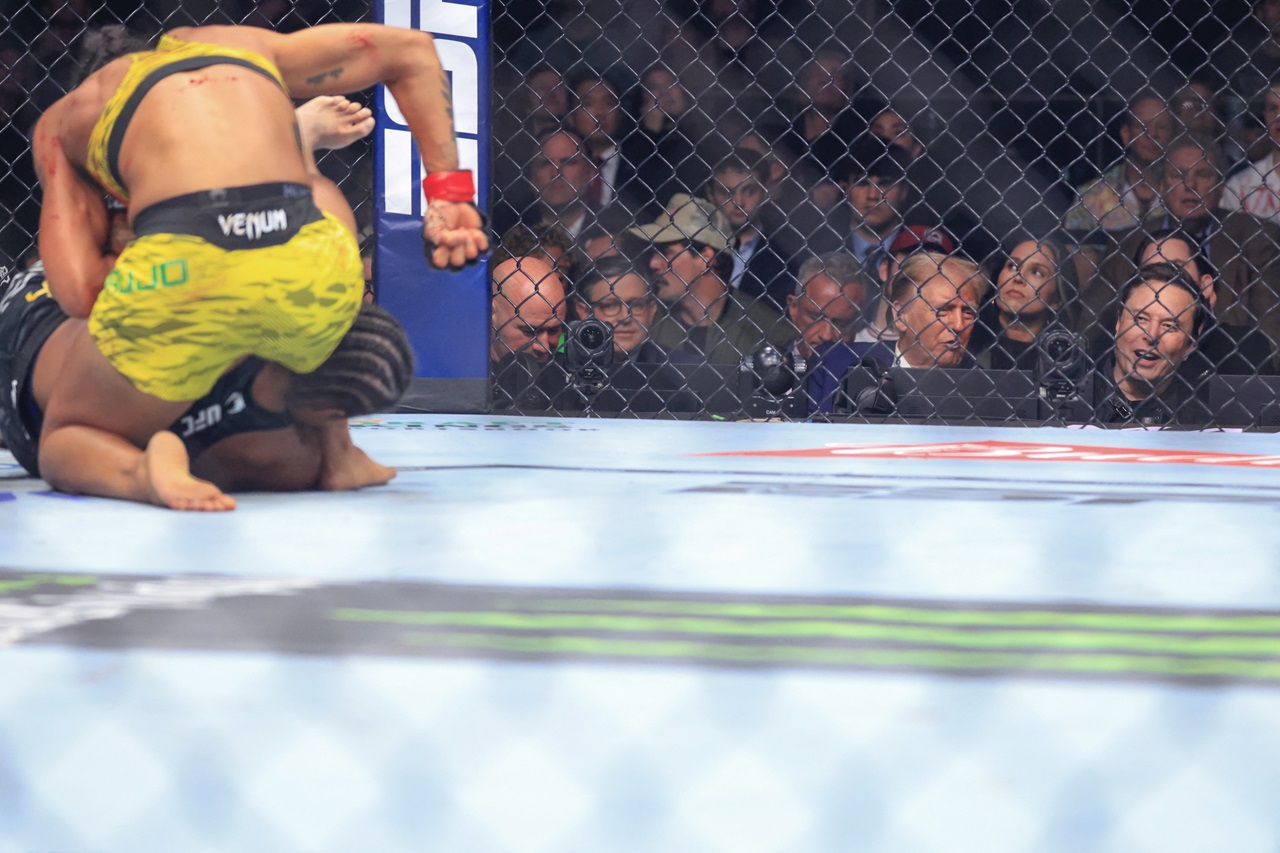
Digital erasure: Native creators cope with Instagram deleting posts on National Day of Awareness for Murdered and Missing Indigenous Women
The “glitch” explained by Facebook leaders doesn’t add up for many Native American creators that make a living on the platforms.
According to the Centers for Disease Control and Prevention, Native American women under the age of 35 experience a higher murder risk than many other groups.
Native Americans themselves know that what their community has been experiencing is an epidemic, but statistics are hard to come by.
One of the most comprehensive studies was conducted by the Urban Indian Health Institute (UIHI) in Seattle. In their report, which investigated 71 urban cities, UIHI found a total of 5,712 cases of missing and murdered Indigenous women. Yet, the U.S. Department of Justice’s official missing persons’ list only collected 116 of these cases.
Despite the lack of data, Indigenous women do their best to bring awareness to the crisis of missing and murdered Indigenous women and girls (MMIWG). Wednesday, May 5, was designated as a day of awareness, specifically on social media.
Hundreds of Native content creators — both organizations and individuals — were gearing up for months, and shared an abundance of information, through Instagram (IG) posts, IG live videos, IG stories and more. But when many of these creators woke up the next morning, they found their content was deleted, expired and flat out disappeared from their accounts.
AL DÍA sat down with Guarina Paloma Lopez and Kara Roselle, two Indigenous activists who had their content deleted, to discuss the issue of Native erasure, both in-person and online.
Lopez, an Indigenous activist and artist of the Pascua Yaqui tribe, said that Instagram has a history of taking down Native IG content. She said that the platform has banned Native accounts protesting against the Washington Football Team, yet racist supporters of the team were permitted to stay up.
In January, IG deleted and blocked the accounts of Native beadworkers whose content was deemed inappropriate.
UPDATE: NIWRC Statement in Response to Removed Instagram Content Related to #MMIR: We received 92 reports so far. Contacted Facebook (owns IG); they are working quickly to fix. #MMIWGActionNow #MMIWG2S
— National Indigenous Women's Resource Center (@niwrc) May 6, 2021
Read statement: https://t.co/lxFNqIwY0f pic.twitter.com/eVKDAnmRyY
“We are silenced when we’re dead, silenced when we’re missing, silenced when we’re alive. Why is social media silencing this movement?” said Lopez.
Her and many others like her, fail to understand how raising awareness about murder, missing relatives, and about racism in the legal justice system is inappropriate.
Lopez said that on Tuesday, May 4, President Biden issued a statement, which declared May 5 as Missing and Murdered Indigenous Persons Awareness Day.
Today, May 5, we honor the lives of missing & murdered Native women & girls (#MMIWG).
— National Indigenous Women's Resource Center (@niwrc) May 5, 2021
The murder rate of Native women is 10x the nat'l average on some reservations.
These crimes are often connected to domestic violence, sexual assault, trafficking, etc. #MMIWGActionNow
In the statement, he also made several commitments to work with Tribal Nations to address the crisis of MMIWG, as well as to address and work to solve other issues in Native communities such as substance abuse, domestic violence, and economic disparities.
While the President’s proclamation of the awareness day as well as his promises, are a great step in the direction of justice, the movement is still being silenced in other ways. For a lot of Native creators, social media is their main platform for both business and activism.
What’s up with @instagram removing #MMIWG2S posts from people’s stories?
— Nahanni Fontaine (@NahanniFontaine) May 6, 2021
I shared about 20 #RedDressDay posts from across Turtle Island highlighting different expressions of support and love, ALL except a couple were removed from my stories.
Why is MMIWG2S being censored?
Lopez sees this massive deletion of specific content as another form of Native erasure.
It’s already a difficult task to raise awareness on an issue that lacks comprehensive data on a federal level. Lopez said that this is partly due to the lack of trust between Native community members and policymakers and statisticians.
RELATED CONTENT
“Historically, colonizers would just take, take, take from us. And people who represented the government in any way tried to kill us. They were there as agents of the government who were trying to stimulate a genocide,” she said. “Even if well-intentioned policymakers, statisticians or graduate students go into a community and really want to help, there’s still going to be a lot of reluctance to divulge personal information, especially information about being abused, experiencing domestic violence, or having siblings who have been killed or are missing. It’s not something you want to talk about easily to a stranger.”
She also said that throughout the pandemic, Native communities used Facebook and Instagram to conduct virtual ceremonies and practices, and keep cultures and languages intact, and share fliers of missing women. So, for Instagram to delete content that is aimed at helping their community fight violence, feels personal, and it doesn’t feel like a coincidence.
Even in a digital space, Lopez said it mirrors the exact way that Indigenous women have been silenced for hundreds of years.
Kara Roselle, an Afro-Indigenous member of the Chappaquiddick tribe, was very disappointed to see the majority of her informative content taken down the next day.
“I think it’s kind of a historical habit; the erasure of and wanting to pick Indigenous women out of spaces and having a voice. I feel like there’s definitely a correlation between the man camps and the disappearances we’re seeing from these women. I guess there’s some reason why they’re wanting to protect that, because there’s really no other reason to dampen the spreading of awareness of missing young women and children,” Roselle said.
Today is the National Day of Awareness for Missing and Murdered Indigenous Women.
— UltraViolet (Text JOIN to 98688) (@UltraViolet) May 5, 2021
There is a deep connection between pipeline projects, the man camps associated with them, and violence against Indigenous women and girls. #MMIW #MMIWG2S https://t.co/QgpfPK5H0x pic.twitter.com/4f6psyXPyb
Instagram, which is owned by Facebook, said in a tweet on Thursday, May 6 that what happened was a global technical issue and it had nothing to do with the type of content being shared.
On Friday, May 7, David Troya-Alvarez of Facebook Corporate Communications issued a statement, apologizing to those impacted, “especially those using their platform to raise awareness about important causes like the National Day of Awareness of Missing and Murdered Indigenous Women and Red Dress Day.”
But for Lopez and Roselle, the glitch explanation just doesn't add up, nor does it compensate for the erasure that took place.
“Some of these people for weeks and months have been preparing for this because this is like our one day. And we’re not getting paid for this, it is a labor of love because we want justice. The hardest thing is that many families went live and retold their stories, yet their stories were taken down,” Lopez said.
Roselle said that one way for Instagram to atone for what happened would be to start featuring Indigenous creators on the main Instagram account.
This may be a moment for @instagram @InstagramComms to turn this into a positive by featuring and boosting Indigenous/Native content creators. Glitch or no glitch, it happened on a very important day for a people who already feel marginalized & wanted to use this day to educate. https://t.co/1KKO7JriJe
— Joshua Brass Fraser - Marketing (@piyesisbrand) May 8, 2021
“I feel like inviting Indigenous voices, people to talk about MMIW specifically, people to talk about their culture and tribe, specifically on Instagram, would be a good place to start to give us a voice for all of the posts that they silence on their platform,” she said.











LEAVE A COMMENT: